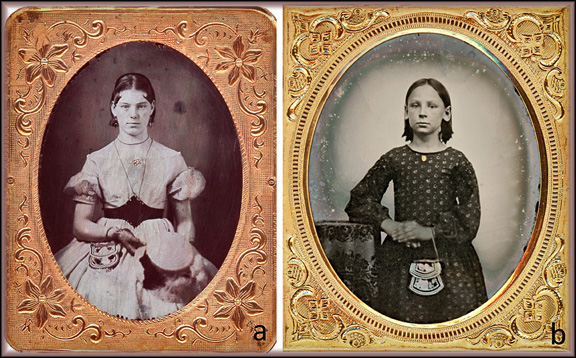By the second half of the 1850s both photographic and dated examples of Niagara style bags indicate that the style was changing. The ovate flowers that were prominent in the early Niagara style were evolving into elongated leaf-like clusters.
The 1850s was a boom decade for the Niagara Falls trade and several books and magazines provided their readers with directions for making Indian styled beaded items. An 1859 edition of the Ladies Newspaper, a British publication, had an illustration of a Niagara floral style bag with elongated leaf clusters along with detailed instructions for making it (see: Phillips 1998: 219, fig. 6.18). It demonstrates how fashionable and widespread the style had become and that anyone could have made one. Ruth Phillips wrote that this particular style of bag:
Was made by the Tuscarora, the Iroquois nation living closest to Niagara Falls and most heavily dependent on the tourist trade there (Phillips 1988:256).
By the late 1850s, the photographic record demonstrates that the transformation from ovate flowers to elongated leaf clusters was almost complete. The unidentified subjects in these two images are wearing a late Niagara floral style bag that is typical of the type we see in the 1860s. The bag in the right hand image appears to have a border of commercial rickrack (a flat narrow braid woven in zigzag form), that was occasionally used as a trimming feature on bags from this decade.
Phillips, Ruth 1998 - Trading Identities: The Souvenir in Native North American Art from the Northeast, 1700-1900. University of Washington Press, Seattle and London: McGill-Queen’s University Press, Montreal and Kingston.
